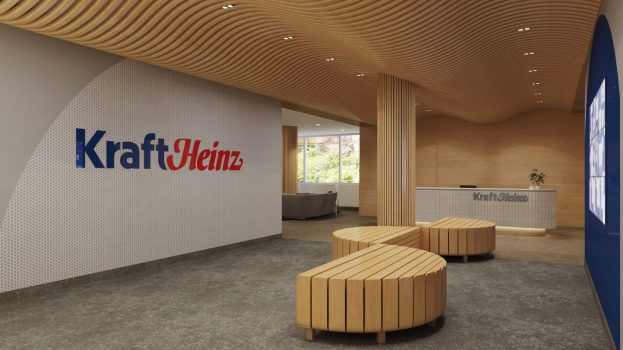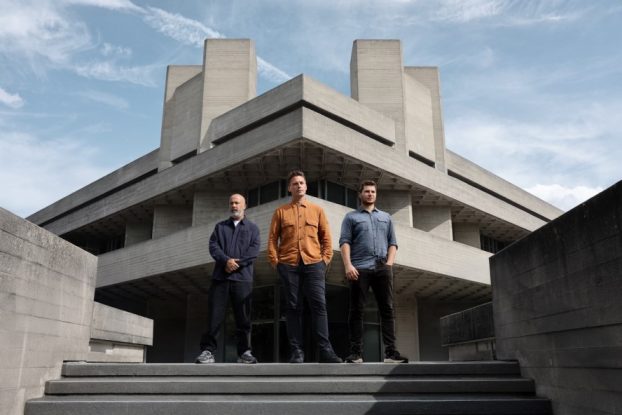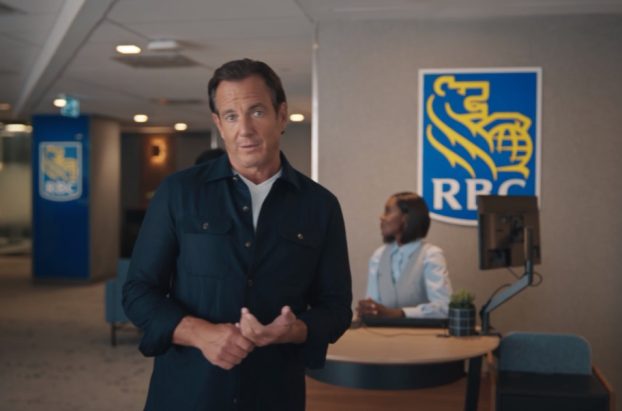Zig positions itself as media-neutral, as per its motto ‘ideas in their most powerful form,’ and this year’s creative delivers on that promise. The five campaigns that landed the agency back in the AOY top three give a sense of what it’s been up to over the past year: work for Molson, Upper Canada College, Ikea, Corus and CFRB earned the agency an AOY Bronze this year, its best showing since it took home Silver in 2004.
If you paid a visit to Zig’s Toronto office last winter, you’d have seen the surefire signs of expansion: renovations. The agency – 10 years old this year – expanded onto a fourth floor of its Richmond Street West home to accommodate the 60 extra staffers absorbed from the merger with fellow MDC company ACLC in June ’08. Former ACLC CEO Esmé Carroll is now Zig co-chair with CEO Andy Macaulay. Shelley Brown, former MD/director of strategic planning, was promoted to president last month.
And just as the Toronto renovations wrapped up, Zig moved its Chicago office (founded in 2006) to new digs on the Magnificent Mile, where the dozen or so employees have settled in to work with clients including Mars, Microsoft, Playboy and National Geographic Channel. The offices also share clients like Toshiba.
As the agency worked to blend two cultures, one of Zig’s co-founders, art director Elspeth Lynn, the long-time creative partner of Lorraine Tao, left the agency last November. The team had made a name for itself and the fledgling agency in the early ’00s putting canny insights into women to work for brands such as Special K and Fruit of the Loom.
This talent for nailing the target every time got the attention of marketers such as Corus Entertainment (YTV was one of Zig’s first clients), which was looking to amp up female viewership for then-newly acquired W Network. ‘We like to push the envelope and take risks [in our advertising],’ says Susan Schaefer, VP marketing, TV, Corus Entertainment, who adds that the agency ‘also respect that we are driven by business results.’
Tao has found a new partner in AD Briony Wilson, a hire from DDB Dallas, and the agency has grown its relationship with Corus to include AOR remits for the off-air advertising of two more women’s specialties, Cosmo and Viva, as well as Dusk (formerly Scream TV) and CMT.
The agency also lured multiple Cannes Lions-winning creative team Michael Murray and Jason Hill from Taxi to work on Ikea and Astral Media Radio.
On the digital front, ACLC’s interactive unit Push is now supporting what Macaulay predicted last winter would be a 20% increase in digital business over 2009 – starting with Unilever’s Axe brand.
Also putting the agency on the cutting edge of media innovation is X, a new connection planning venture jointly owned by Zig and former Cossette SVP/media director Cathy Collier. Announced in May, the agency affiliate maps the consumer decision-making process to find the critical moments that influence brand choice and determine the right type of brand interaction, whether it’s a message, an experience or both, for each identified moment.
Zig has also consistently been strong in TV and radio – which Macaulay affectionately refers to as ‘the death valley of creativity’ – bringing home international hardware for clients like Ikea, which has localized Zig creative in countries like Israel and Italy. This year’s humorous ‘Dubbed Husband’ campaign for Ikea’s kitchens business (see p. 32) was a hit with judges like Draftfcb CCO Robin Heisey, who admired the campaign’s use of ‘insight to engage and entertainment to reward involvement. It also had one of the best pieces of film of the year.’
The facts:
Locations: Toronto, Chicago
Staff: 115
New hires: Jason Hill, Michael Murray, Briony Wilson, Andrew Cloutier, Neil Blewett, Gail Dhruv
New business: Axe (digital), Burt’s Bees, CosmoTV, Elysian Hotels, Environmental Defense, Just for Laughs, Playboy Enterprises, Tribune Media Group (ChicagoNow.com, WGN, RedEye), Torys law firm, Toys ‘R’ Us, Viva
CASES:
Scream TV goes supernatural
There is no substitute for experience, particularly in the world of thrills. Telling people about the hit U.S. show Supernatural, new to Scream TV, wasn’t enough. To truly understand how thrilling it was, people needed to experience the suspenseful and shocking content first hand.
Toronto-based Corus Entertainment picked up the new show as part of its strategy to reach a goal of increasing Scream TV (now renamed Dusk) subscriptions by 45%. But the network had a shoestring marketing budget. Zig had to unleash something that would gain momentum without the benefit of a lot of paid media behind it.

This meant a completely new communication medium that could get inside people’s heads. In an advertising first, Zig employed an ultrasonic sound cannon that uses special frequencies to directly target someone in a crowd so only that individual can hear it. Unsuspecting people walking through the sound beam heard spooky growls, whispers and laughter, scaring them out of their wits – until the ruse was exposed. The fright was backed up with guerrilla signage and an accompanying street team, who congratulated the victims on their first supernatural experience.
Buzz spread across video sharing sites, blogs and fan sites. Immediately following the stunt, there was a 30% subscription increase. And thousands of people across Toronto got to directly experience a Supernatural thrill before they even tuned into the show.
Molson Canadian cracks the code
The Canadian beer category has changed dramatically over the last decade, with value beers and super premiums polarizing the market. As a result, high-volume mainstream players like Toronto-based Molson Coors Canada’s Canadian brand have been squeezed into a perceptual no man’s land between ‘cheapest’ and ‘best.’ Compounding the issue was a meandering brand positioning that left consumers wondering what the brand stood for.
Guys, not surprisingly, equate Molson Canadian with’Canadianness.’ When asked to describe the best part of the brand, they were unable to separate it from the best part of the country and the best part of themselves. They actually felt let down when Molson Canadian (and therefore Canadians) didn’t stand for something.
Zig realized that the missing something should be the consumers themselves. Past efforts had successfully tapped into the national identity, so the key was not to avoid ‘Canadianness,’ but to find the sweet spot that held more emotional power than many brands can ever hope to wield, and connect the beer to national values.

It was Molson Canadian’s job to stand up for the Canadian guy – to celebrate his values, his way of life and his perspective. ‘The Code’ is an insightful celebration of the unwritten code by which guys live, dramatized in a multimedia, integrated campaign. The television spelled out the code from sippy cups to street hockey, while localized radio spots and print ads celebrated summer BBQ events and hockey season with a heartfelt ode to the Leafs.
As beer drinkers respond with enthusiasm, tracking results are the best they’ve been in over a decade.
CFRB 1010 wants to talk
Toronto is a big city with big issues. But polite Torontonians prefer to ignore the city’s underbelly rather than talk about it, let alone voice their opinions in a public forum like CFRB 1010 Talk Radio. And if they do want to discuss issues, they head to the web. Most non-listeners don’t know how the issues of the day are dissected on CFRB and would never think to tune in. Zig’s challenge was two-fold: resonate with current listeners and raise awareness amidst potential listeners – and talkers.
Zig wanted to inspire discussion that would take on a life of its own. The media had to be in-your-face enough to stop people in their tracks, draw crowds, drive word of mouth and force everyone – the person on the street, mainstream media, bloggers and social network junkies – to take note and get involved in the debate around CFRB.
So the agency turned the issues themselves into media: prostitutes held signs questioning the legalization of prostitution, beggars sat under posters pondering the ethics of panhandling, chalk body outlines appeared on streets questioning crime rates and smokers were called out for puffing away their healthcare benefits.
People talked, specifically young people, immediately pushing up CFRB’s rating points by 1.9. Passionate callers ranged from the amused to the outraged, from first-timers to those who hadn’t been inspired to pick up the phone in years. The resulting fervent debates examined the motivation behind the campaign and drove the message home.
The press also weighed in, resulting in over $100,000 of free additional media and exposure to nearly four million people in the Greater Toronto Area. A talk radio station that had been perceived as outdated and irrelevant became the controversial talk of the town.
Ikea Canada’s kitchen fantasy
For Burlington, ON.-based Ikea Canada, selling kitchens was a global priority. The high average price point of kitchens made them a lucrative contributor to sales growth. But during the housing and home renovation peak of 2008, Ikea’s main kitchen rival had achieved more than double Ikea’s top-of-mind awareness as a ‘retailer of complete kitchens’ through broad advertising and DM efforts.
To outsmart the competition, close the gap and increase kitchen sales, Zig connected Ikea’s mission of ‘a better everyday life at home’ to a new definition of the Canadian kitchen. For Canadians, kitchens are the centre of the home. But qualitative research revealed that this was getting lost in the business of renovation. People were becoming preoccupied by resale value, square-footage and stainless steel.

To help people realize that a better kitchen could mean a better life, Zig took the emotional high ground, shifting the focus to what really happens in the kitchen. This also allowed the agency to create the much-needed perceptual distance from the more functional ‘renovate/re-sell’ space.
Zig developed an integrated campaign that shows what can happen when you improve the centre of the home. One TV spot, ‘Dubbed Husband,’ featured a man who storms into his new Ikea kitchen to vent about his day, while his wife imagines a more romantic soliloquy, with the tagline, ‘Everything seems better in an Ikea kitchen.’ Other elements included rich media banners and radio.
Results far exceeded expectations. Tracking showed an increase in awareness for Ikea kitchens. More importantly, sales of Ikea kitchens increased despite the recession.
Upper Canada College’s tomorrow thinking
Once the bastion of education for well-heeled young lads, Toronto’s Upper Canada College (UCC) faced a two-pronged challenge: a decline in alumni participation and a lack of diversity in applicants. Zig’s task was to make an old-school brand relevant in today’s world.
Research revealed that each of UCC’s two critical audiences – prospective parents and alumni – had its own tension to be resolved. Parents didn’t perceive UCC as an innovative or nurturing school. For alumni, it was the sense that their connection to UCC made them seem self-interested and stodgy.
The common element was that both groups had an interest in the promise of the future: UCC students. For parents, their child is a ‘treasure chest waiting to be unlocked’ while for alumni, ‘supporting the school is supporting an ingredient for the future,’ according to qualitative research. That led Zig to develop ‘Tomorrow Thinking,’ which made the brand promise clear: UCC believes in equipping boys for a changing future.

With the foundation in place, it was key for the brand to dramatize that promise in a way that differentiated it from the ubiquitous imagery of the category. The chalkboard – manned by real UCC students – provided the raw, exploratory and fluid canvas to do just that. Campaign elements included print, collateral material and guerrilla tactics.
Alumni involvement has risen again, with especially encouraging participation from younger alums. Fundraising goals have been met across the board, and interest in UCC’s boarding program is attracting a more diverse cross-section of applicants.
Jump to:






















